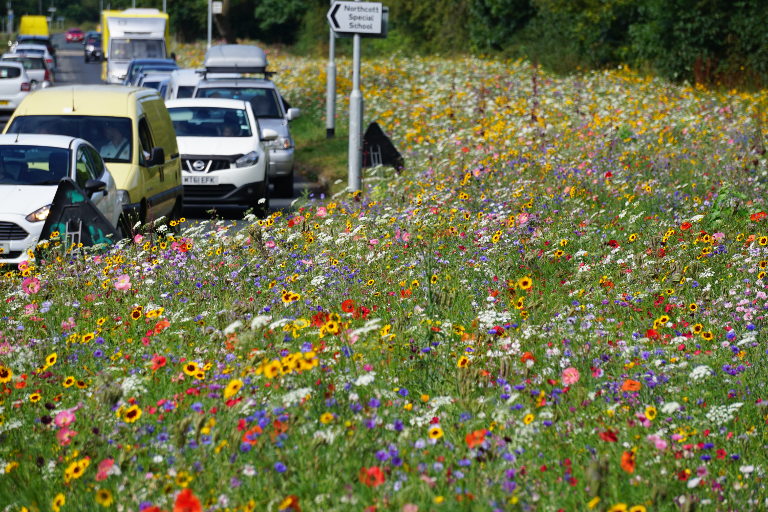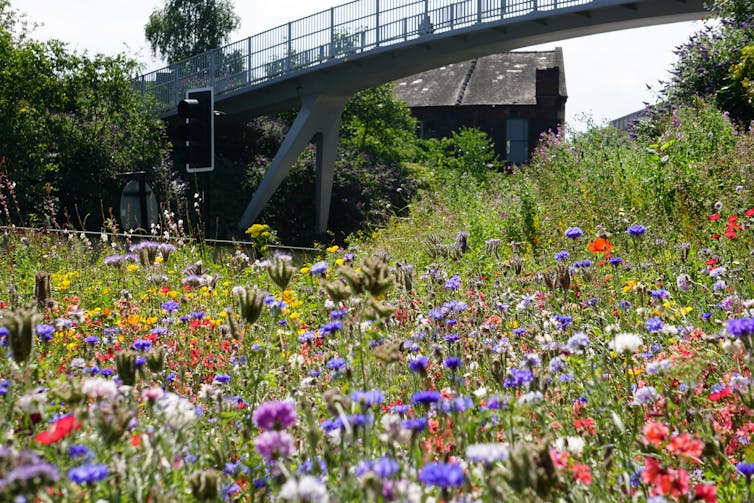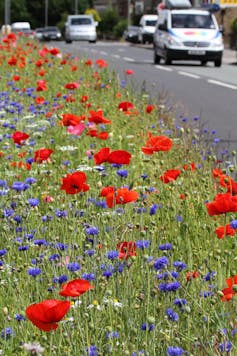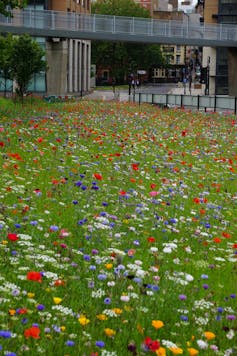Since the end of World War II, 97% of the UK’s wildflower meadows have been dug up or destroyed. Many won’t remember a time when the countryside was filled with grassland that rippled with rainbows of flowers, but they are likely to recognise the intense yellow glare of pesticide-soaked oilseed rape fields that dominate rural landscapes today.
The joy of being immersed in a meadow – surrounded by the fluttering of butterflies, the chirping of crickets and the buzz of bees – is increasingly rare. Without urgent action to tackle dwindling biodiversity, these memories will disappear.
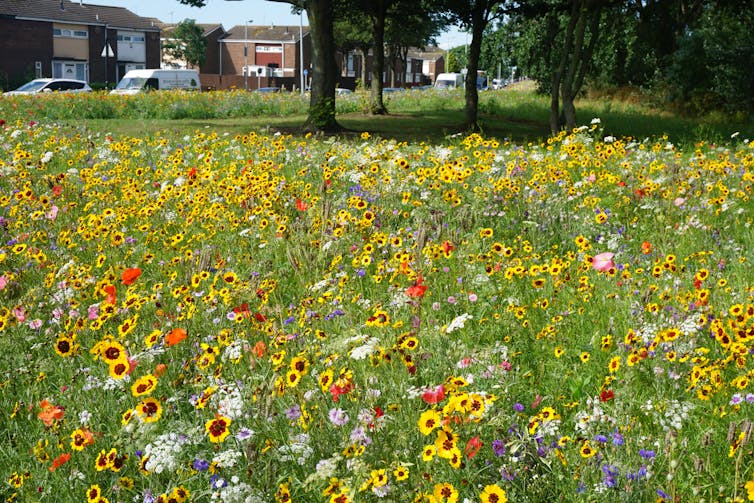
Just like the flowers that they feed on, insect pollinators are in trouble, with one third of the UK’s wild bee and hoverfly species showing declines in their numbers since the 1980s. Clearing grassland for farms and using harmful chemicals such as pesticides on crops has driven many pollinator species to this state, but these insects are essential for growing many of our favourite crops.
By transferring pollen between flowers, they ensure that crop plants are successfully fertilised and can go on to develop the fruits and seeds that we like to eat. Without them, future generations may no longer be able to enjoy summer strawberries or autumn’s apples and pears.
How we grow food will need to change to ensure wildlife has room to live and isn’t exposed to toxic chemicals. In the meantime, there are solutions sitting right on our doorsteps. Simple changes to how our gardens, parks and public spaces are managed could give pollinators a brighter future.
A meadow growing strong beneath an overpass in Sheffield. Pictorial Meadows
The road to change
One way to protect our pollinators is to change the way that our roadsides are managed. Some country lanes are bursting with blooms, but the majority of road verges in the UK are cut to within an inch of their lives. Regular mowing is needed to ensure drivers can see clearly on sharp bends and junctions, but neat and tidy roadsides leave nothing for pollinators to eat.
Sowing wildflower seed mixes and reducing how often verges are mowed can transform barren stretches of motorway into colourful meadows filled with the pollen and nectar that bees and butterflies currently struggle to find. Bees don’t seem to be put off by the traffic noise and their numbers have been shown to increase dramatically on verges that are cut no more than twice a year.
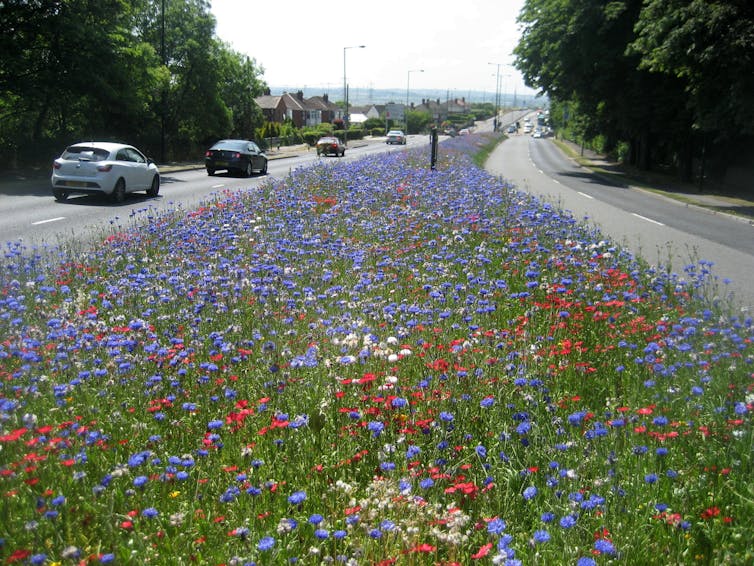
Bees, butterflies and hoverflies are more abundant on meadow habitat than grass verges that are regularly mowed. Pictorial Meadows
Plantlife, a British conservation charity, has called on councils to turn their road verges into wildflower meadows by cutting just once in late summer, between mid-July and September. Pictorial Meadows is another campaign group that has researched how meadows can be encouraged in urban environments. It recommends cutting late to give flowers time to be pollinated, produce fruit and then set their seeds in the soil, so that the meadow can grow back year after year. Cutting earlier prevents flowers from fruiting and setting seed.
Red poppies and blue cornflowers are common UK wildflower species. Pictorial Meadows
Over 65,000 people have now signed a petition encouraging councils across the UK to allow wildflower meadows to grow on roadside verges. Councils seem to be listening. Rotherham Borough Council has established eight miles of meadows alongside a motorway, saving £23,000 per year on mowing costs.
The UK road network spans over 246,000 miles – and reducing mowing on the grass verges that surround them to just once a year could save money and create thriving habitats for pollinating insects that return on their own each spring.
Wildflowers brighten a roundabout in Sheffield. Pictorial Meadows
Next time you are out in your local area, have a look at the roadsides and public spaces from the perspective of a hungry bee. Can you find any flowers? Is there enough variety for you to maintain a balanced diet? Will there still be flowers for you to feed on next week? If the answer to any of these questions is no, then you might be inspired to take action.
If you have a garden, consider creating miniature meadows in underused patches of lawn, or focus on filling the flower beds with bee-friendly flowers. Small changes do add up. By signing the petition and engaging with your local council in the campaign, we could see rapid and widespread transformation of road networks and a blossoming future for butterflies and bees.
![]()
This article is republished from The Conversation under a Creative Commons license. Read the original article.
Teaser photo credit: The eight-mile ‘river of flowers’ that grows alongside a motorway near Rotherham, UK. Pictorial Meadows


